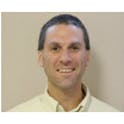Hypnodontist: Because words matter
Contrary to the comic and mystical portrayals common in Las Vegas stage shows or Hollywood, guiding someone into hypnosis is primarily about influencing their focus of attention. This can be quickly and easily done by understanding a few core concepts and then communicating according to observable reactions and the desired response.(4)
No props or costumes are required, though the context of the dental office and the inherent authority of the dental professional does create an advantage. Everything you do and say contributes to the expectation formed by the patient. This in turn relates to their suggestibility--the likelihood of an automatic reaction matching your instructions.
When you say "This will only hurt a little," the patient looks for the hurt and then assesses whether it is really a little or maybe more. You've focused attention on the expectation of pain and the patient accepts this as a suggestion.
Instead you can encourage the patient to take a few deep breaths and focus on their toes, noting "You are perfectly safe thinking about whichever toe makes you feel more comfortable now." You can even predict that "In a moment, you can notice one of those toes is starting to tingle, and that just means the anesthesia is working."
By shifting attention away from the delivery of the local anesthesia, while at the same time building expectation the anesthetic agent will begin working, the patient is being explicitly told "You are perfectly safe" and "You feel more comfortable now." The instructions to the patient are embedded right into the ordinary conversational flow of treatment. It may seem odd to think of this as hypnosis but it utilizes many of the field's most basic premises as pioneered by psychiatrist Milton H. Erickson, MD.(5)
Dr. Erickson has influenced multiple generations of hypnotists as well as the foundation of the field of Neuro-Linguistic Programming (NLP).(6) Those of us who model his approach refer to our style as conversational hypnosis. We recognize that a formal process of inducing "trance" is not necessary to influence someone to experience what we might call "hypnotic phenomena"--anesthesia/analgesia, time distortion, catalepsy, among others.(7)
We've all found ourselves surprised to discover a paper cut that's been bleeding for a while, noticing the sting only once the cut comes to our awareness. This is a natural manifestation of analgesia. Of course, "Time flies when you're having fun," or slows to a crawl when enduring a boring event. And we sometimes find ourselves "frozen" or "paralyzed" by fear (catalepsy).
Each of these phenomena can seem amazing as a result of hypnotic suggestion but they are all really just natural and normal responses to life. That explains why you can learn to help patients be more comfortable through minor adjustments in your language; inducing hypnosis is not always necessary to produce the effect.(4,5,6,7)
We call these language skills hypnodontics and teach them to dental professionals in many different ways. Check this space in a future issue for a language pattern you can use to help reluctant patients book a recommended treatment they've been avoiding.

